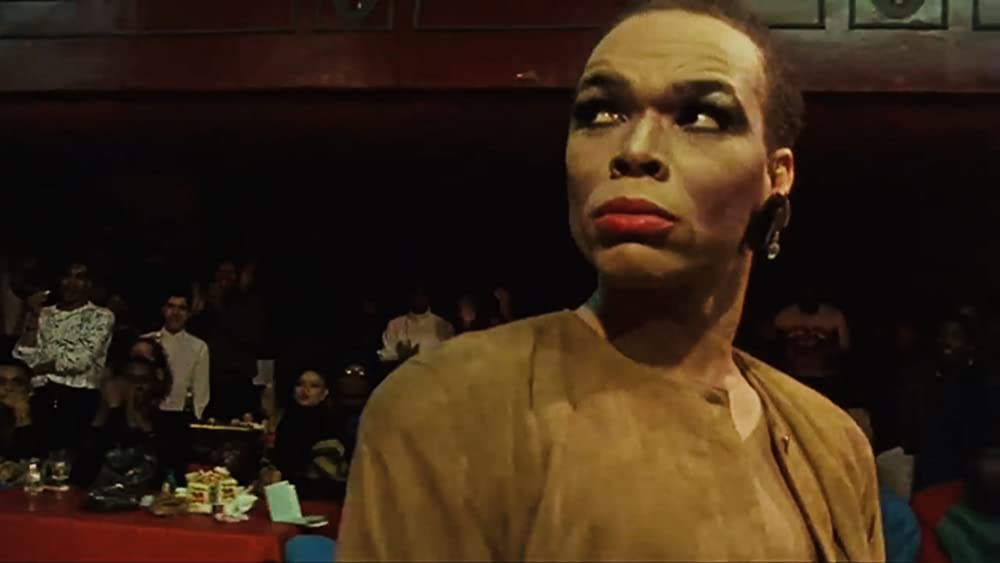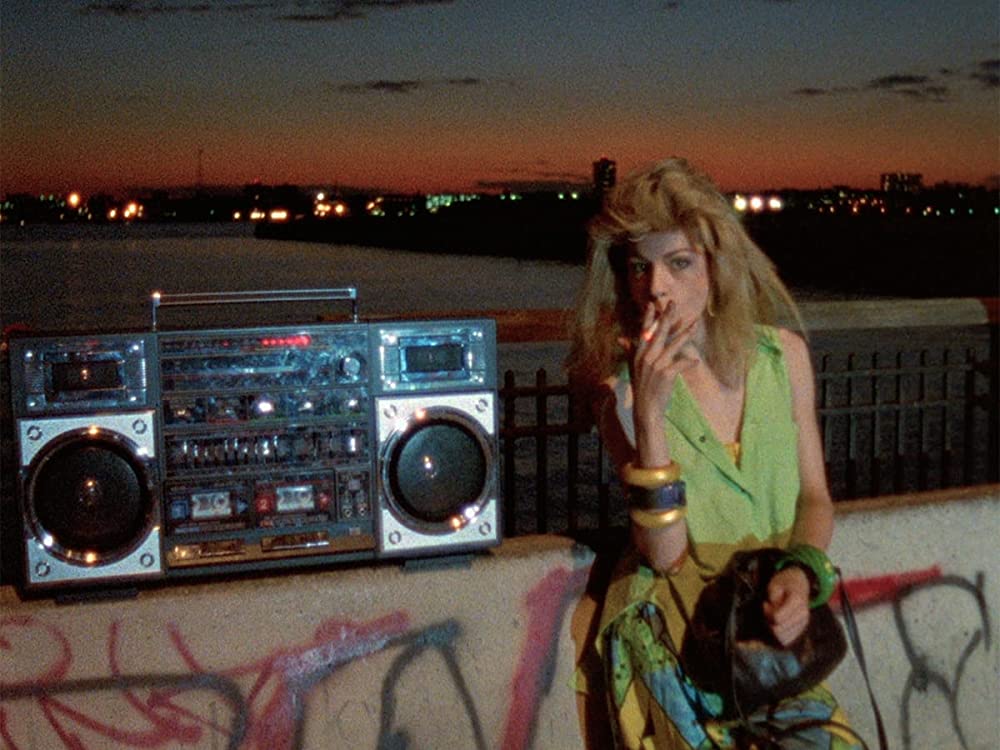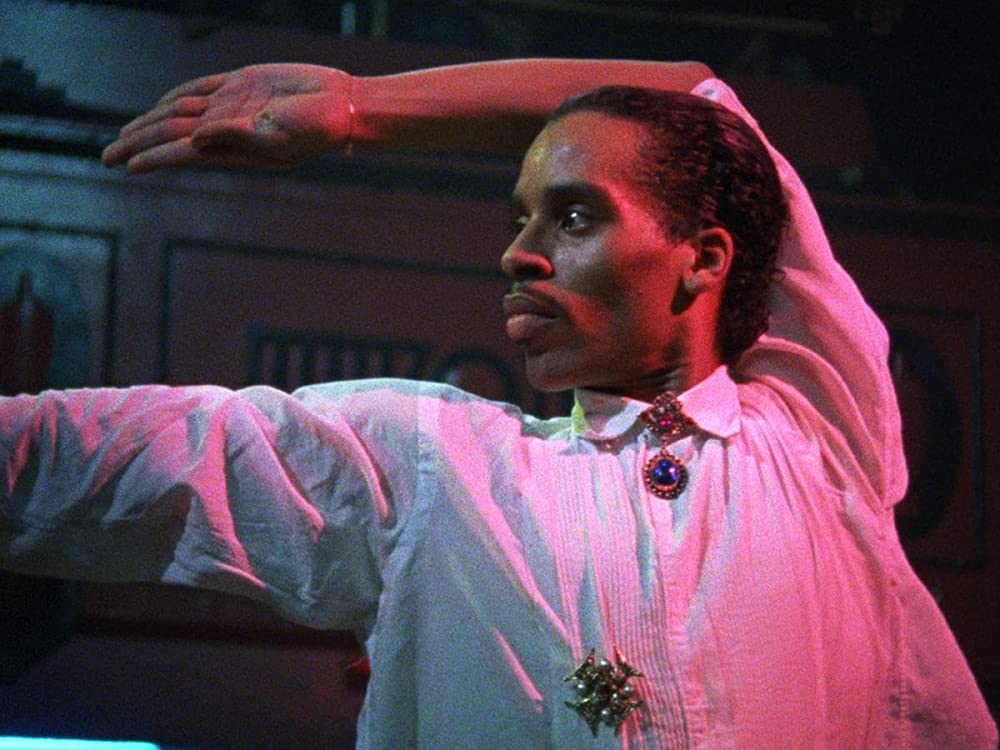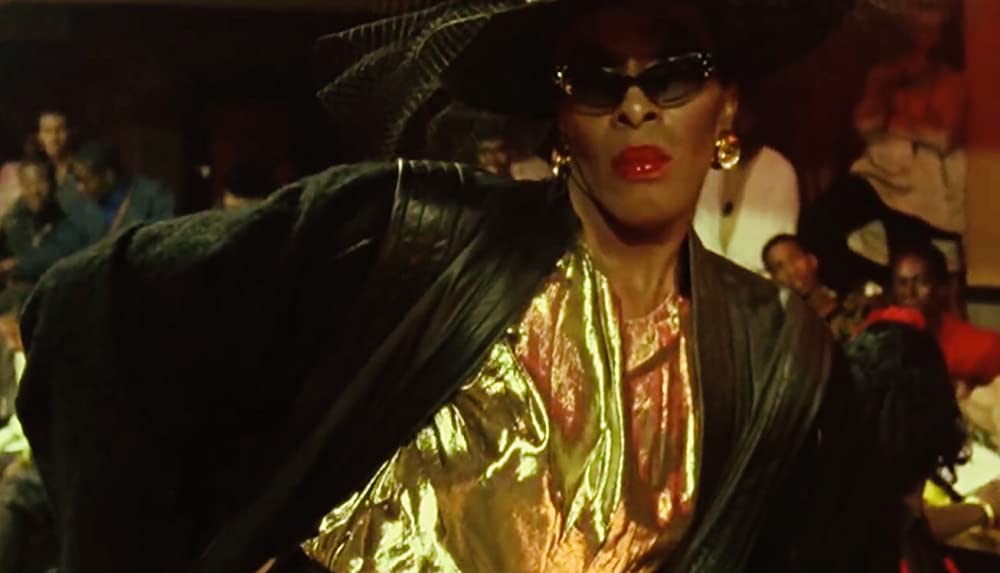By Eleanor Kenny, Third Year, Film & Television
Jenny Livingston’s 1990 documentary Paris is Burning is hailed as a seminal piece of LGBTQ+ cinema, shining a spotlight on the ballroom culture that flourished in the eighties in New York’s underground drag scene.
The 80-minute film offers those who choose to watch a chance to relish in its glitz and glamour, whilst being educated on the icons and outcasts on who’s shoulders the balls were built on.

Paris is Burning was Jennie Livingston’s debut feature film, and the 7-year project covers an abundance of themes regarding sexuality, race, class and gender identity. Painted against the background of the turbulent Reagan years that exacerbated the vulnerabilities of the LGBTQ+ community, particularly Black and Latinx members, the ballroom appears to offer brief salvation to anyone who seeks it.
As a topic that would have been completely alien to anyone unaffiliated with the art of drag (the filmmaker herself initially became intrigued by a random encounter of two men ‘voguing’ in a New York park), Livingston lays out the groundwork in what I call a ‘straight man’s guide’ to New York drag; an almost A-Z display of the structure, the stakes and the intrinsic language of the ballroom. Partnered with this are intimate interviews with both participants and legends who relish in hilarious and heart-breaking anecdotes of their years at the highly anticipated event, allowing the viewer to garner a greater sense of just how important the ballroom is to the community that blossomed within it.
Some may be familiar with the existence of the documentary and ballroom scene due to its revived telling in shows such as Rupaul’s Drag Race (2009-) and Pose (2018-), offering a new generation a segue into the history of the drag form that we know and love today. The former hosts challenges such as catwalks and ‘reading’ competitions in homage to the very fiercest of queens.

The latter bases its entire narrative on the rivalries between drag houses and the importance of winning ballroom competitions, especially for LGBTQ+ youth who rely on this once-a-year opportunity to express their true selves and be awarded the recognition they have always deserved but been denied. It is easy to become familiarised with the specific drag terminology evidenced by various contestants, explained in true mothering style by the likes of the reigning queens’ Pepper Lebeija and Dorian Corey, each description elevated by an exemplary quip.
Corey reels off examples of the concept of ‘throwing shade’, such as ‘I don’t have to tell you you’re ugly … I don’t have to tell you because you know you’re ugly. That’s shade.’
The Grandfather of Voguing and Mother of the House of Ninja, Willi Ninja, introduces the unique dance form he created, stating that ‘vogueing’ evolved as a facet of throwing shade, a battle-like tactic. ‘Voguing’ was the most mainstreamed of terms, having made its stamp on pop culture after Ninja himself choreographed Madonna’s 1990 video of ‘Vogue’, amplifying the riches and ahead-of-its-time creativity that could be found in the art of drag, an art that was commonly looked down on due to outsider’s perceptions of performances being overly sexualised and therefore too inappropriate for the mainstream.

The film is inherently political by nature, something that would be have been inappropriate for Livingston to try to avoid in the narrative considering that the lives depicted on screen have been politicised by no choice of their own. Marginalised groups in America were consistently active in fighting for equality through radical means, and Paris is Burning shows no exception; a tenacious group of radicals, doing the most radical thing possible, accepting and celebrating those who were persistently rejected and avoided by society.
In the face of adversity, this community managed to not only demonstrate an extension of the American dream, but rather the very epitome of the ideals it boasts. Almost every character that features in the film can recall personal hardships that lead them to the ballroom scene. A more poignant recurring scene shows two 14-year-old boys outside of the ballroom, detailing to Livingston about life on the street in contrast to life on the ballroom floor, a place where they felt was a safe enough environment to establish a new life after they had been rejected by their families for showing signs of being homosexual (despite this place still being the streets of New York City).
Where America had failed on delivering promises of freedom, pioneering drag queens acted on these convictions; so long as a contestant was on the ballroom floor and in the correct drag for their category (it was common for people to steal outfits just so they could compete) they were to be judged equally and praised for flamboyant talents and sickening style. There was a world of possibility inside the four ballroom walls, shielding a harshly contrasted world outside, one which sought to restrict both freedoms of expression and freedom of rights.

The joy of expression radiates off of each contestant, creating an energy that is palpable even through a laptop screen three decades later. A joyous energy which is made bittersweet once learning that the majority of the queens you grow to love perished due to AIDS complications or to the devastating consequences of bigotry and sexual oppression.
Five films about the HIV/AIDS crisis to watch this LGBTQ+ History Month
Seven films to look out for in 2021
To deny the film’s relevance in this day and age would be a naïve and ignorant stance, as unfortunately the ever-important rhetoric that trans, queer and Black lives matter still has to be protested as much today as it was in the 1980s. A rhetoric that Livingston supports through revealing the unwarranted hardships imposed on these young individuals through their own words, but more importantly through highlighting the magic to be found in witnessing genuine, personal freedom; gloriously evidenced of Brooke Xtravaganza twirling on a beach exclaiming ‘I am my own creation!’. May the film continue to be as a source of inspiration of the ever-evolving art form of drag, a reminder of paying due respects to the trailblazing artists and activists, and moreover a celebration of queer beauty, queer voices and queer existence.
Featured: IMDb
Have you seen this seminal piece of LGBTQ+ cinema?








